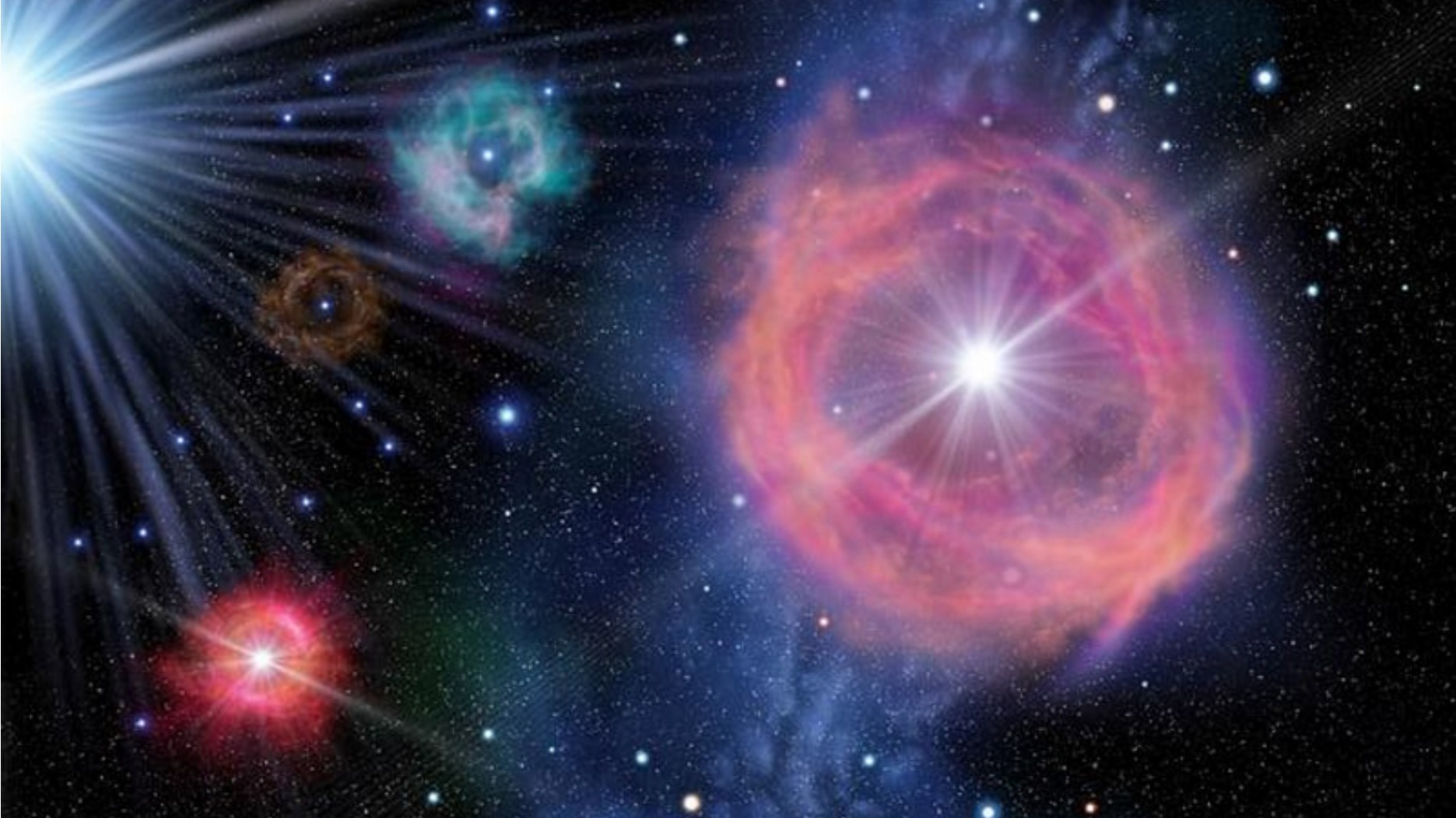
The chemical composition of a strange star found in the halo of our Milky Way galaxy represents the first evidence of the violent deaths of the universe's first stars, a new study reports.
The universe’s first stars were born around 100 million to 250 million years after the Big Bang, which occurred about 13.8 billion years ago. But scientists are still in the dark about how the mass of this first generation of stars was distributed.
Modeling of stars in the early universe indicates that some of these stellar bodies may have had masses equivalent to hundreds of suns. Massive stars end their lives with gigantic cosmic explosions called supernovae, but stars with masses between 140 and 260 times that of the sun back then would have ended their lives in supernova blasts different from those typically seen in the later universe (known as Type II and Type Ia supernovae) , study team members said. These unique explosions are referred to as pair-instability supernovae (PISNe).
Related: Supernova photos: Great images of star explosions
All supernovae spread elements heavier than hydrogen and helium, which astronomers call metals, throughout the universe. Metals are synthesized in the cores of giant stars and are incorporated into the next generation of stellar bodies.
As they are quite different from ordinary explosive stellar death throes, these PISNe should leave behind a unique chemical fingerprint in the next generation of stars. Yet, until now, astronomers have failed to discover these cosmic fingerprints.
In the new research, a team of scientists found that the chemically peculiar star LAMOST J1010+2358 could represent the first evidence of PISNe from early massive stars.
The researchers used data collected by the Large Sky Area Multi-Object Fiber Spectroscopic Telescope (LAMOST) survey and follow-up observations by the Subaru Telescope in Hawaii to determine that LAMOST J1010+2358 formed in a gas cloud that was dominated by the remains of a 260-solar-mass star that died in a PISNe blast.
The most significant chemical evidence marshaled by the team was an extremely low abundance of sodium and cobalt, and a large variance between elements that have odd and even numbers of electrons.
This is significant, because PISNe occur due to an instability caused by the production of electron and anti-electron — or positron — pairs. This instability reduces thermal pressure inside the core of a very massive star and leads to a partial collapse.
"It provides an essential clue to constraining the initial mass function in the early universe," study corresponding author Zhao Gang, a professor at the National Astronomical Observatories of the Chinese Academy of Sciences (NAOC), said in a statement. "Before this study, no evidence of supernovae from such massive stars has been found in the metal-poor stars."
Additionally, the team found that LAMOST J1010+2358 is much richer in iron than other metal-poor stars of a similar age in the galactic halo. This suggests that second-generation stars forged in clouds containing the gaseous remains of PISNe could be more abundant in heavy elements than currently thought.
"One of the holy grails of searching for metal-poor stars is to find evidence for these early pair-instability supernovae," astrophysicist Avi Loeb, the former chair of the Astronomy Department at Harvard University, who was not involved in the research, said in the same statement.
The team’s research is detailed in a paper published online today (June 7) in the journal Nature.







